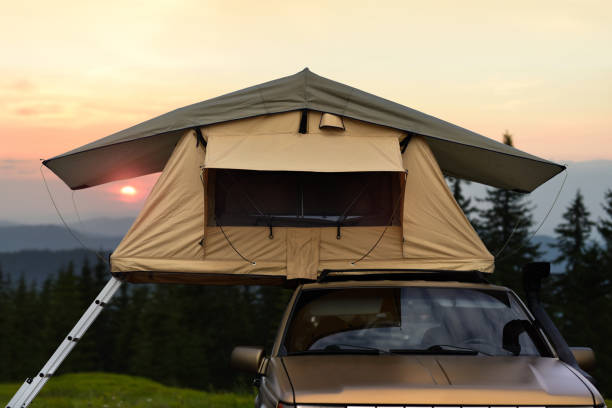Camping in the rain may seem like a dampening experience, but with proper preparation, it can be a memorable journey. Imagine cozying up inside your elevated tent, surrounded by nature’s watery embrace, while staying dry and snug.
In this guide, we unveil some useful tips and tricks for mastering the art of camping with a rooftop tent in the rain. From waterproofing measures to proper gear selections, we’ll help with what you need to know when you want to turn rainy camping into an extraordinary escapade.
So, grab your raincoat and follow along as we navigate the wonders of rainy camping with a rooftop tent. Let’s make every drop count!
-
Use plastic bags to pack your camping gear
One essential tip for camping with a rooftop tent in the rain is to use plastic bags to safeguard your camping gear. It is necessary to ensure the dryness of your equipment, and plastic bags serve as a practical solution. You can pack your tools and clothes in plastic bags while keeping them from moisture.
Besides, in the event of worsening weather conditions and the absence of a tarp, a plastic bag can be a lifesaver. It can serve as an additional layer of defense for your sleeping bag, as it helps shield it from rain.
Similarly, using plastic bags for your clothing will keep them dry. You will be able to stay comfortable and warm as you wait for the rain to come to a stop.
-
Don’t wear cotton clothes
When it comes to camping in the rain, one crucial tip is to steer clear of cotton clothing. Cotton and rain are a disastrous combination because cotton has a knack for absorbing water and clinging uncomfortably to your skin.
Instead of cotton, you should opt for quick-drying synthetic layers like polyester and nylon. These materials will ensure you stay dry and cozy throughout your camping adventure.
For added protection against the elements, choose outer layers made of softshell or hardshell waterproof materials, complete with waterproof zippers. By avoiding cotton, you’ll be able to avoid ending up with soggy clothes.
With this, your camping experience will be a much more enjoyable one.
-
Make use of large waterproof tarpaulins
When camping with a rooftop tent in the rain, don’t forget the power of a large waterproof tarp. These versatile and lightweight items can be found in most camping equipment stores, and they are worth the investment.
Get a tarp that can comfortably shelter a group of about eight people. If you have knotting knowledge, you can easily set up a dry shelter using trees or other available supports.
Remember to choose a manageable tarp to lift overhead because heavy ones can pose a safety risk in heavy rainfall. Secure the tarp tightly to the sides of the tent and ensure it stays put so it doesn’t loosen even under heavy winds.
-
Go along with warmers
Be prepared for changing weather conditions during your camping adventure by packing essential warmers. Before embarking on your trip, ensure you have a stash of warmers to keep you warm during rain and chilly weather.
Pack hand gloves, socks, arms and legs warmers, and heavy blankets. Don’t forget to include rain pants or gaiters, even if rain isn’t in the forecast.
Water activities and morning dew can leave you soaked, so it’s better to be prepared. By bringing warmers along, you’ll stay cozy and comfortable, ready to embrace any weather surprises that come your way during your rooftop camping experience.
-
Bring a burner along
Bring along a portable burner if you want to enjoy warm meals even when it’s raining. Whether you opt for a gas or a wood burner, having a cooking source is essential.
However, taking precautions to keep your cooking equipment dry is crucial. If you have a soft-shell rooftop tent, you may be able to cook underneath it for added protection.
Alternatively, you can set up your kitchen area under a tarp to shield it from rain. Remember to keep a safe distance between the open flame and your car to prevent unwanted fire hazards.
-
Find a good and leveled camp space
It is necessary for you to find a suitable and leveled space when setting up camp with a rooftop tent, especially when anticipating rain. Choose a safe location away from water sources and avoid parking downhill.
Try to look for higher ground so that your campsite can stay dry and secure when the rain starts. Prioritize leveling your vehicle on even terrain, as this will make tent setup easier and safer.
Furthermore, it’s advisable to assemble the tent before the rain arrives, but if time runs short, seek shelter in the car until the storm passes. Remember, attempting to level and assemble a rooftop tent during a downpour is hazardous.
If you’re looking for high-quality rooftop tents and accessories to enhance your camping journey, visit rooftoptents.ca. We offer a wide range of reliable and durable products that elevate your camping experience.


